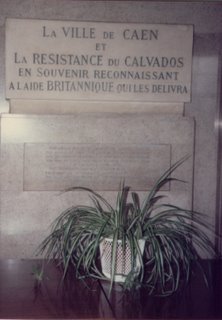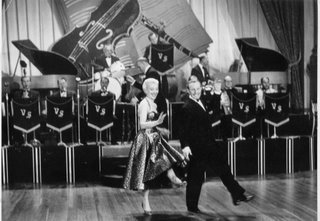The internet is truly a wondrous affair and one of its major joys is when one stumbles across an item to do with research long since forgotten.
On the BBC WW2 website, I’d written a fair piece about my experiences in Austria at the closing stages of the war and the small part that my Regiment, the 4th QOH had played in rounding up German war criminals. You can read that account
by clicking hereYesterday I was browsing the internet, came across a story on a website called ISTRIANET.ORG and it had a large piece on Globocnik.
Who was Globocnik, I hear you ask?..... I hasten to explain.
Globocnik was a particularly nasty piece of work, one time Gauleiter of Austria and when the war finished in Austria in May 1945 he was on the Allied list of ex SS who were to be detained on sight. One of the reasons for his notoriety was that he was known to have buried SS Gold to avoid its discovery.
You can read about this infamous character
on the ISTRIANET website here The article on the ISTRIANET site goes as follows:
Different stories of Globocniks' capture and subsequent death have emerged. The one most commonly cited is that Globocnik committed suicide at about 11:30 a.m. the same day outside the small prison, 100 m west of the castle in Paternion.
His body was photographed, together with his three comrades [pictured right], then said to be quickly buried and "confirmed" by poorly faked photographs of his body.
A November 1996 report by Erwin H. Lerner describes the capture by the 4th Queen's Own Hussars of the 56th ("London") Division of Globocnik in Austria. The 4th Hussars were stationed in Italy as part of XIII Corps, commanded by Lt. Gen. Sir John Harding. They had no business in Austria, but were apparently working with the 78th Division and a Field Security Service unit based in Villach. Their target was not even Globocnik, but the Gauleiter of Carinthia, Dr. Friedrich Rainer.
The fact that British units from Italy were involved in the capture of Globocnik may have led Michael Elkins and others to conclude that the men in British uniforms were avengers from the Jewish Brigade Group. Howard Blum has even written a whole book about it, but, to his credit he did not attribute Globocnik's death to these Jewish avengers.
Lerner wrote of the capture:
"Globocnik posing as an engineer in hiding from Partisans told a very plausible story, and had clearly thought out his cover very carefully. The whole party was marched off ... and taken to the HQ 4 Hussars in Paternion.
"Globocnik was left by himself for some time. He had not up to this time been challenged with his true identity. He betrayed himself by half answering a summons shouted in his real name, and was thereupon told that we knew who he was. Still professing innocence he was marched away, but he had gone only some 150 yards when he collapsed and quietly died from hydrocyanic poisoning. It is almost certain that the glass ampoule was under his tongue from the time of his early morning, arrest as all prisoners were searched for poison, and one ampoule discovered on SS Sturmbannfuhrer Lerfh.
"Rainer later confirmed that the dead man was in fact Globocnik. "At 1230 hours all the prisoners were handed over to Provost Office, 78 Division for disposal through 88 FSS."
In yet another story, it is said that Globocnik swapped some of his gold and jewels
I now give the relevant excerpt from the Regimental Diaries of the 4th QOH for 31/5/1945
0430 – The party (4th Hussars) arrived at the hut.
0500 – Hut surrounded.
0510 – The door at the front was opened by Major Ramsey who had entered through a loft window. The door at the back was forced by Major Quarmby and Lt Hedley. Four men were found in the front of the house. Interrogation began at once and all men except the Gauleiter and SS Sturmbannfuhrer Lerch denied any knowledge of the SS. The women were allowed to remain in the hut, but arrangements are in hand (1430 hours) to arrest them. Dr Rainer, Lerch, three unidentified suspects and a fourth man who gave references in KLAGENFURT were brought down to the prison at PATERNION.
0715 – Schutz re-arrested on accusation of Kummerer.
1130 – The man suspected of being Glovocnik was trapped into acknowledging his name by a slight movement of his head when Major Ramsey shouted his name across the courtyard. He was ordered into arrest and poisoned himself with Prussic acid while walking the 150 yards between the Castle yard and the prison. Capt MM Leigh RAMC attempted to revive him but was unsuccessful. It was considered that he had had this poison concealed in his mouth from the moment in which the first alarm was raised at the hut as he consistently refused all form of refreshment. Three suspects on viewing the body confessed their identities as:-Sturmbannfuhrer der SS Michaelson,SS Sturmbannfuhrer Hoffle,Oberscharfuhrer Karl Hellesberger SS in TRIESTE.
1245 – all eight prisoners were removed by Capt Willett, leaving only Schutz in detention and under further investigation.




